コラム
落合憲弘
John Sypal
タカザワケンジ
なぎら健壱

Since we got a car last summer I’ve been enjoying weekend day trips outside of Tokyo. Many of these trips have been up into Saitama, the large land-locked prefecture that sits north of the capitol. Since I don’t have a license I sit in the passenger seat with the dual role of google-map navigator and window-looker-outer.
Starting each of these trips from Tokyo, we first wind through the city to get on the elevated highway that’ll takes us up and over the maze of Kita ward. Speeding along it I watch the city density dissipate as we drive north. From the elevated highway, the canyon of tall housing complexes give way to mere four-story apartment buildings and, crossing the Edo river into Saitama, it’s obvious we’re not in Tokyo anymore. Going further, farm fields start to appear amongst the low-slung suburban sprawl.
Now, the goals of most of these weekend day trips are to visit sits such as the waterfalls, caves, and shrines found in the mountains of western Saitama. To get to the “good stuff” though, you must first pass through miles and miles of suburban/rural redevelopment. It’s a flat landscape of broad roads with wide sidewalks that run past strip malls, countless used car dealerships, Amazon distribution hubs, and convivence stores with comically large parking lots. In between, and near rice paddies or plots of farmland, you’ll see rows of near-identical prefab houses (oddly spaced with Tokyo-type tightness).
Peppered throughout all this you can catch glimpses of crumbling farm houses and husks of former beauty parlors or local ramen spots. It’s not the kind of place that the Ministry of Land, Infrastructure, Transport and Tourism will feature in a Cool Japan campaign, but the fact is a lot of Japan looks like this. And by “this”, I mean the stuff that’s in the pictures that comprise Hiroyoshi Yamazaki’s current exhibition, Outskirts.
Taken on walks with a Mamiya 7II camera and Kodak Portra film between 2009 – 2013, this is a yet-unpublished body of work taken near his hometown. His statement for the show tells us that this particular area, Nishi Obukuro, was re-zoned for urbanization in 1996. Currently, a little over half of its 125 hectares are actually “profitable”. It seems that planners’ dreams of a vitalized and economical beneficial community lost out to a variety of factors, with both the successful development of a different town nearby and Japan’s general population decline playing a part. His statement notes that some farmers within Nishi Obukuro are actively trying to give up their land due to a lack of successors.
Even though I’ve spent a lot of time watching these kinds of landscape pass the window, I admittedly hadn’t given much thought to the recent social, civic, and economic aspects of it.
But like so many other bands of land that mark the overlap of rural and urban Japan, Nishi Obukuro is a sort of a vague, halfway-zone- middle-class middle-schoolers bicycle past aged farmers on wide new sidewalks framed by weeds- new houses, old barns.
Of course, this isn’t a judgmental statement! I certainly don’t feel “bad” for its residents, either from a car’s passenger side window or standing before Yamazaki’s photographs. These communities look like healthy, comfortable places to raise a family. (Or walk with a camera through.) The children that appear in one of his pictures have the kind of room to ride a bicycle or walk a dog that Tokyo kids can only dream of.
Places with so much “nothing” leave room for multiple interpretations- yet Yamazaki declines to give a particular social-oriented message with this work. Like his earlier series of color snapshots in Smell on the Street (https://photoandculture-tokyo.com/contents.php?i=1910), or his street-level Tokyo panoramas in Crossroads ( https://photoandculture-tokyo.com/contents.php?i=2719) - or his current digital series Around Laketown, Hiroyoshi Yamazaki’s photographic approach is of accurate observance and general curiosity. His pictures are clearly seen and straightforwardly presented.
The exhibited work of Outskirts consists of twenty 10x12 sized C-prints. Rather than being framed, the prints have been slid inside larger 11x14 sized acrylic protective sleeves which were then pinned to the wall at the top corners. I thought this was a clever- and practical- method. Visitors are offered further context for the photographs in the form of Yamazaki’s statement and a map clearly showing where Nishi Obukuro is located in Saitama.
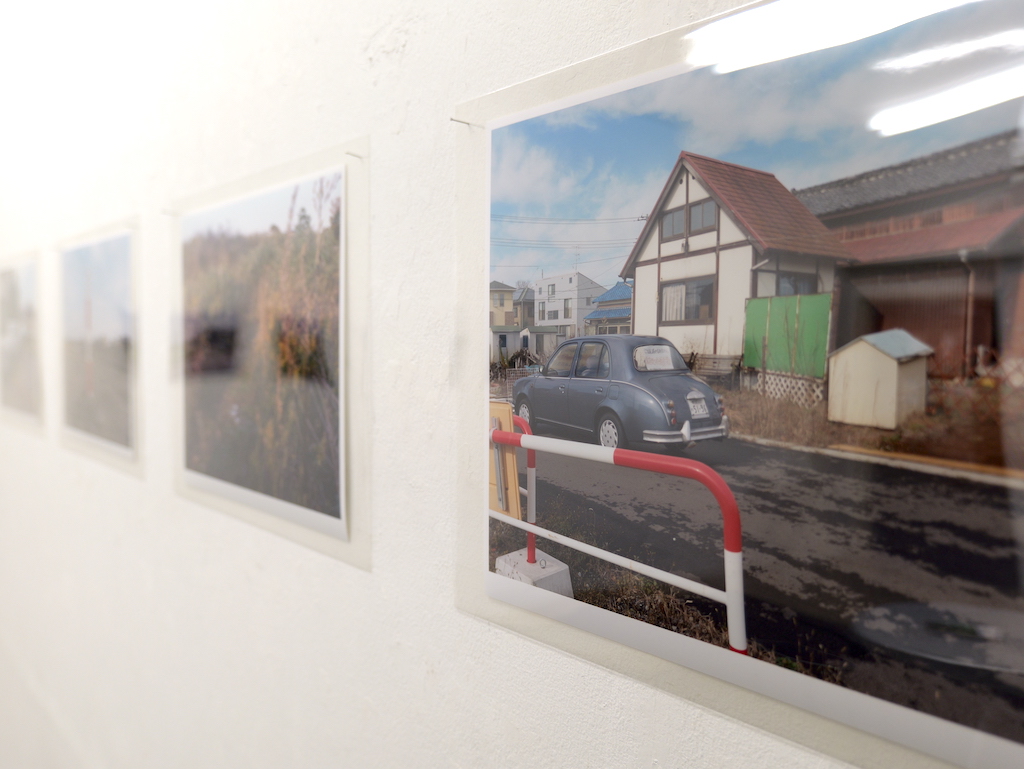
昨年の夏に車を買って以来、週末は東京郊外への日帰り旅行を楽しんでいます。多くは埼玉県への旅行です。埼玉県は首都東京の北に位置する内陸県です。私は運転免許を持っていないので、助手席に座っています。私の仕事はGoogleマップのナビゲーターであり、車窓を眺めることです。
東京を出発すると、まず都内を抜けて高架道路に乗り、迷路のような北区を越えていきます。高速道路を北上するにつれ、街の密度が薄れていくのがわかります。江戸川を渡って埼玉に入ると、ここはもう東京ではないことがわかります。さらに進むと、低く広がる郊外のスプロールの中に畑が見え始めます。
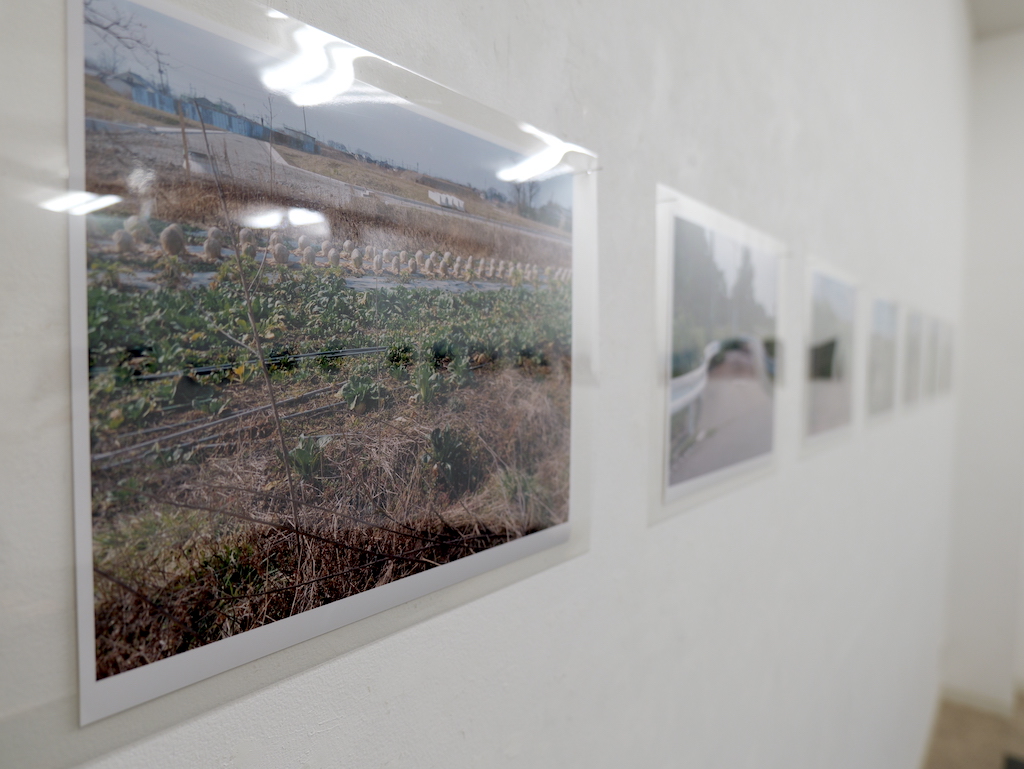
こうした週末の日帰り旅行の目的は、埼玉県西部の山中にある滝や洞窟、神社などを訪れることです。しかし「いいところ」に行くためには、まず何キロも続く郊外/田園の再開発地帯を通過しなければなりません。ストリップモール、無数の中古車販売店、アマゾンの配送拠点、滑稽なほど大きな駐車場を持つコンビニエンスストアなどを通り過ぎ、広い歩道のある広い道路が走る平坦な風景です。その間の田んぼや農地の近くには、ほぼ同じプレハブ住宅が並んでいます(東京型の狭い間隔が奇妙です)。
そのあちこちに、崩れかけた農家や、かつての美容院、地元のラーメン店の跡が垣間見えます。国土交通省がクールジャパンのキャンペーンで取り上げるような場所ではありませんが、事実、日本の多くはこんな感じです。
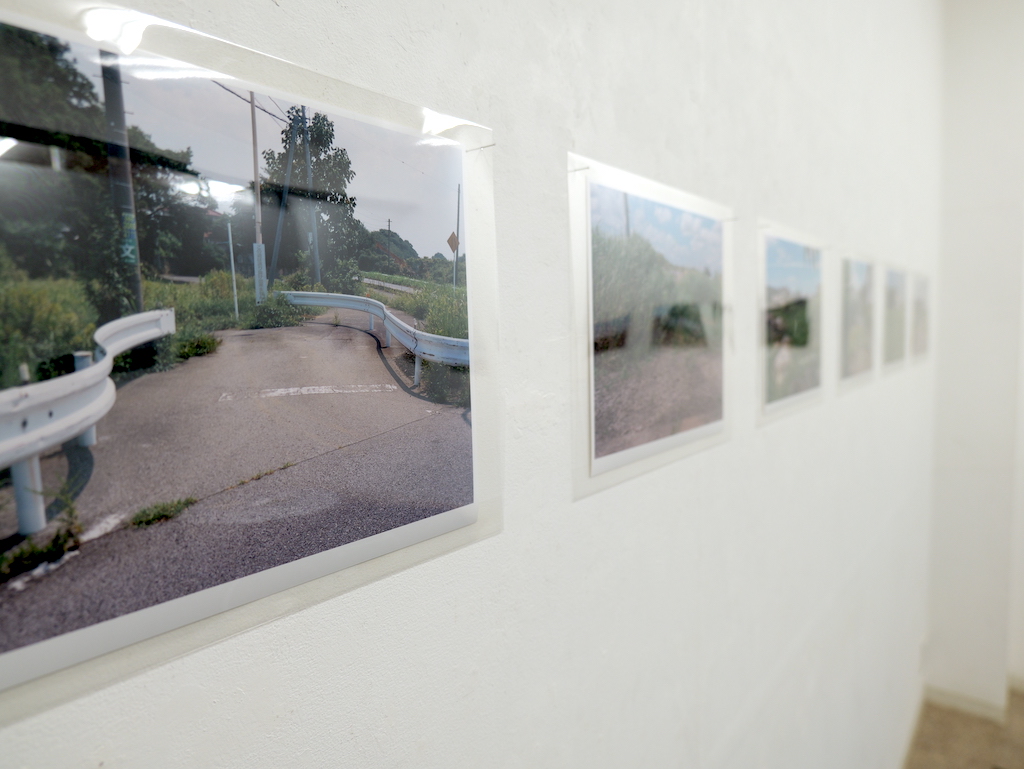
今回紹介する、山崎弘義さんの展覧会「Outskirts」に展示されている写真にはそれらが写っています。
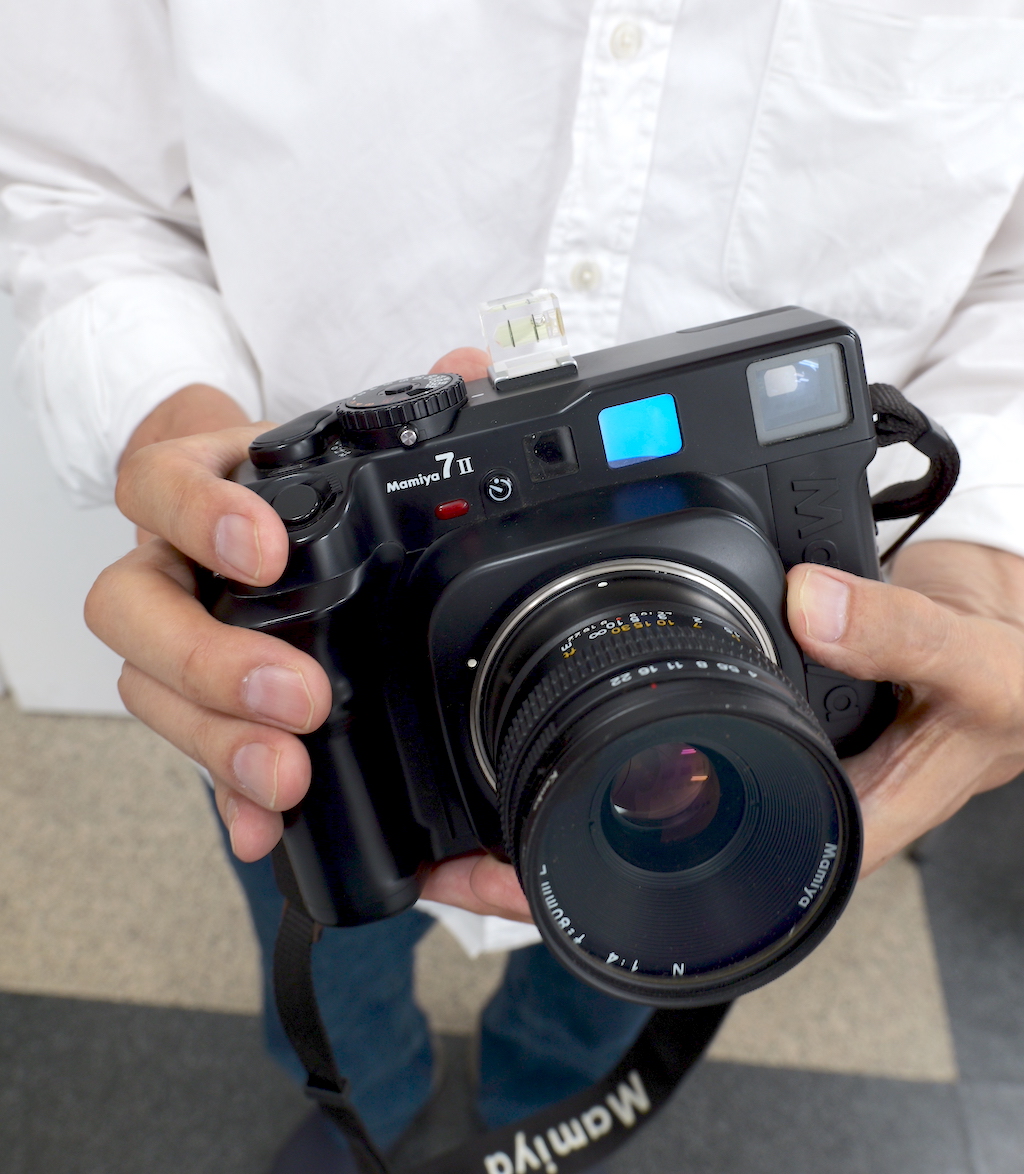
2009年から2013年にかけて、マミヤ7IIとコダック・ポートラフィルムで撮影されたこの作品は、彼の故郷の近くで撮影された未発表の作品群です。埼玉県越谷市の西大袋は1996年に市街化調整区域に指定されました。現在125ヘクタールのうち、実際に「採算が合う」のは半分強。 活性化された経済的に有益なコミュニティというプランナーの夢は、近隣の別の町の開発が成功したことと、日本の一般的な人口減少が一因となって、さまざまな要因に敗れたようです。西大袋の農家の中には、後継者不足のために積極的に土地を手放そうとしているところもあるといいます。
このような風景を車窓から眺めることに多くの時間を費やしてきたにもかかわらず、最近の社会的、市民的、経済的側面についてあまり考えたことがなかったのは紛れもない事実です。
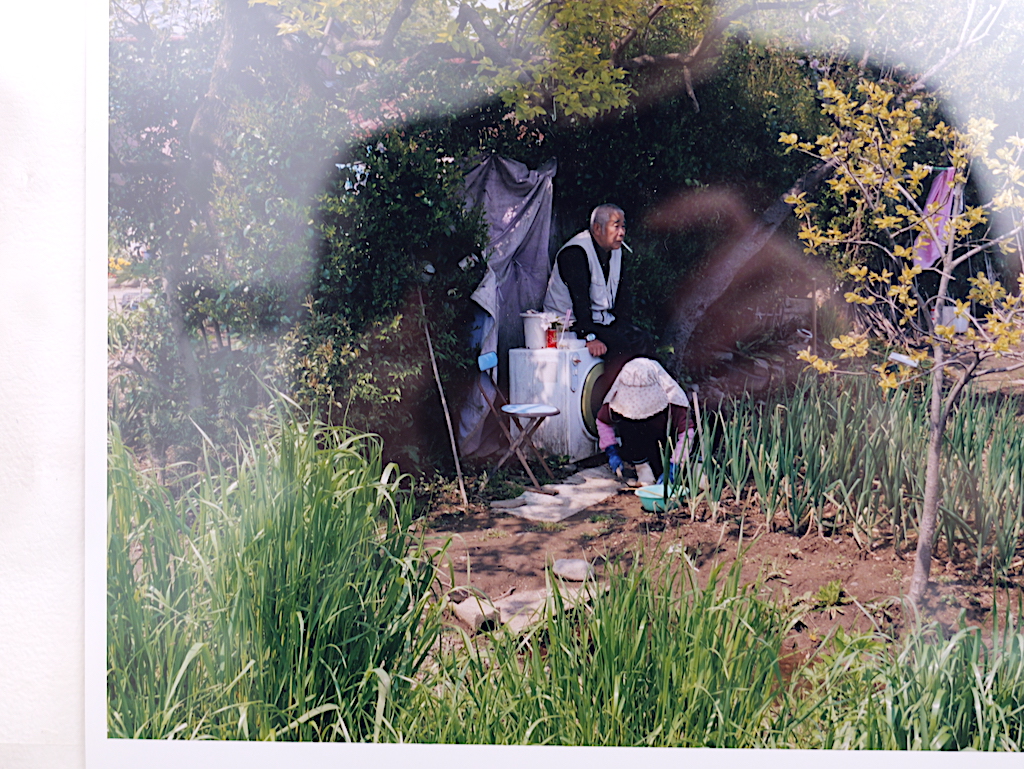
中流階級の中学生たちが、雑草に縁取られた新しい広い歩道を自転車で走り、年老いた農家の前を通り過ぎる風景。
もちろん、これは決めつけではありません。助手席の窓から見ていても、山崎さんの写真の前に立っていても、住民に「悪い」とは思いません。これらの地域は、家族を養うのに健康的で快適な場所に見えます。山崎さんの写真に登場する子供たちは、東京の子供たちが夢見るような、自転車に乗ったり犬を散歩させたりするのに十分な空間を持っているのです。
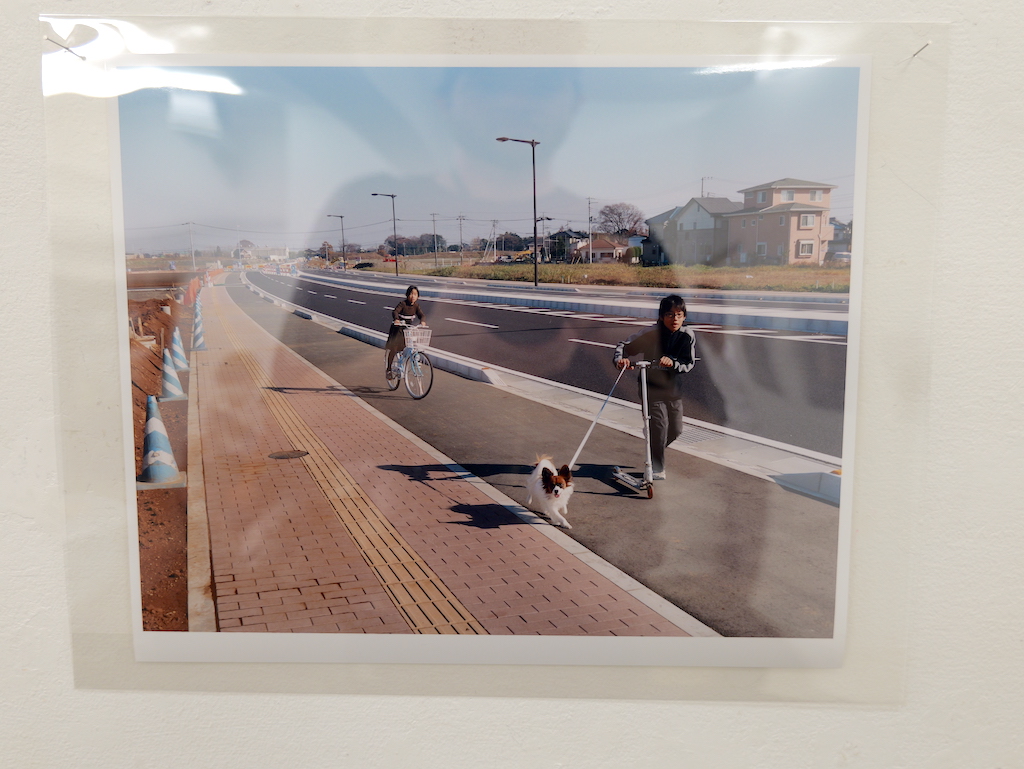
「何もない」場所にはさまざまな解釈の余地がありますが、山崎さんはこの作品で特定の社会的なメッセージを発しようとはしていません。以前のカラースナップ写真シリーズ『路上の匂い』(→Exhibition Report Vol.16)や、ストリートレベルの東京パノラマ写真『Crossroads』(→Tokyo Photobook Tour 22)、そして現在のデジタルシリーズ『Around Laketown』のように、山崎弘義さんの写真アプローチは、正確な観察と一般的な好奇心です。彼の写真ははっきりと見え、ストレートに表現されているのです。
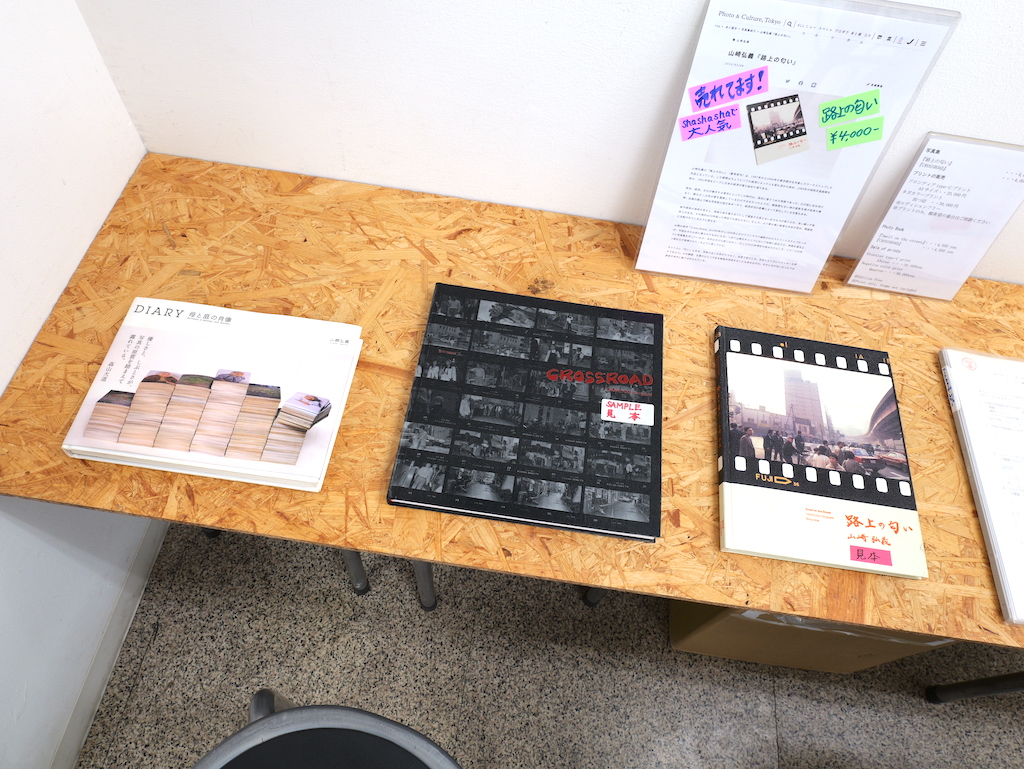
「Outskirts」の展示作品は、10×12サイズのタイプCプリント20点からなります。額装するのではなく、11×14サイズの大きなアクリル製保護スリーブの中にプリントを入れ、上部の角を壁にピンで留めしてあります。これは巧妙で実用的な方法だと思いました。会場に設置された山崎さんのステートメントと、西大袋が埼玉のどこにあるのかを明示した地図という形で、来場者は写真のさらなる背景を汲み取ることができるでしょう。

- Hiroyoshi Yamazaki "Outskirts"
Gallery Yocto
August 2 – 18, 2024 (13:00-19:00 closed Mondays & Tuesdays)- 山崎弘義写真展「Outskirts」
- 会期:2024年8月2日(金)~8月18日(日)
- 会場:ギャラリー・ヨクト
- 時間:13:00〜19:00(月曜日・火曜日定休)
http://blog.livedoor.jp/galleryyocto/archives/41189560.html
 Vol.41 中嶋琉平|Ryuhei Nakashima「Asia, New York, and Tokyo」、高地二郎|Jiro Kochi「GINZA: Through the eye of a Salaryman 1950-1990」
2025/11/08
Vol.41 中嶋琉平|Ryuhei Nakashima「Asia, New York, and Tokyo」、高地二郎|Jiro Kochi「GINZA: Through the eye of a Salaryman 1950-1990」
2025/11/08
 Vol.40 藤岡亜弥|Aya Fujioka「Life Studies」、荒木塁|Lui Araki 「Color/Scape」
2025/10/03
Vol.40 藤岡亜弥|Aya Fujioka「Life Studies」、荒木塁|Lui Araki 「Color/Scape」
2025/10/03
 Vol.39 榎本八千代|Yachio Enomoto「家族写真 / Family Photo」
2025/09/05
Vol.39 榎本八千代|Yachio Enomoto「家族写真 / Family Photo」
2025/09/05
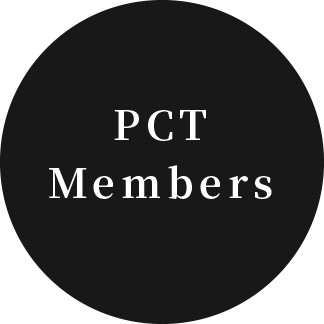

PCT Membersは、Photo & Culture, Tokyoのウェブ会員制度です。
ご登録いただくと、最新の記事更新情報・ニュースをメールマガジンでお届け、また会員限定の読者プレゼントなども実施します。
今後はさらにサービスの拡充をはかり、より魅力的でお得な内容をご提供していく予定です。
 「Photo & Culture, Tokyo」最新の更新情報や、ニュースなどをお届けメールマガジンのお届け
「Photo & Culture, Tokyo」最新の更新情報や、ニュースなどをお届けメールマガジンのお届け 書籍、写真グッズなど会員限定の読者プレゼントを実施会員限定プレゼント
書籍、写真グッズなど会員限定の読者プレゼントを実施会員限定プレゼント